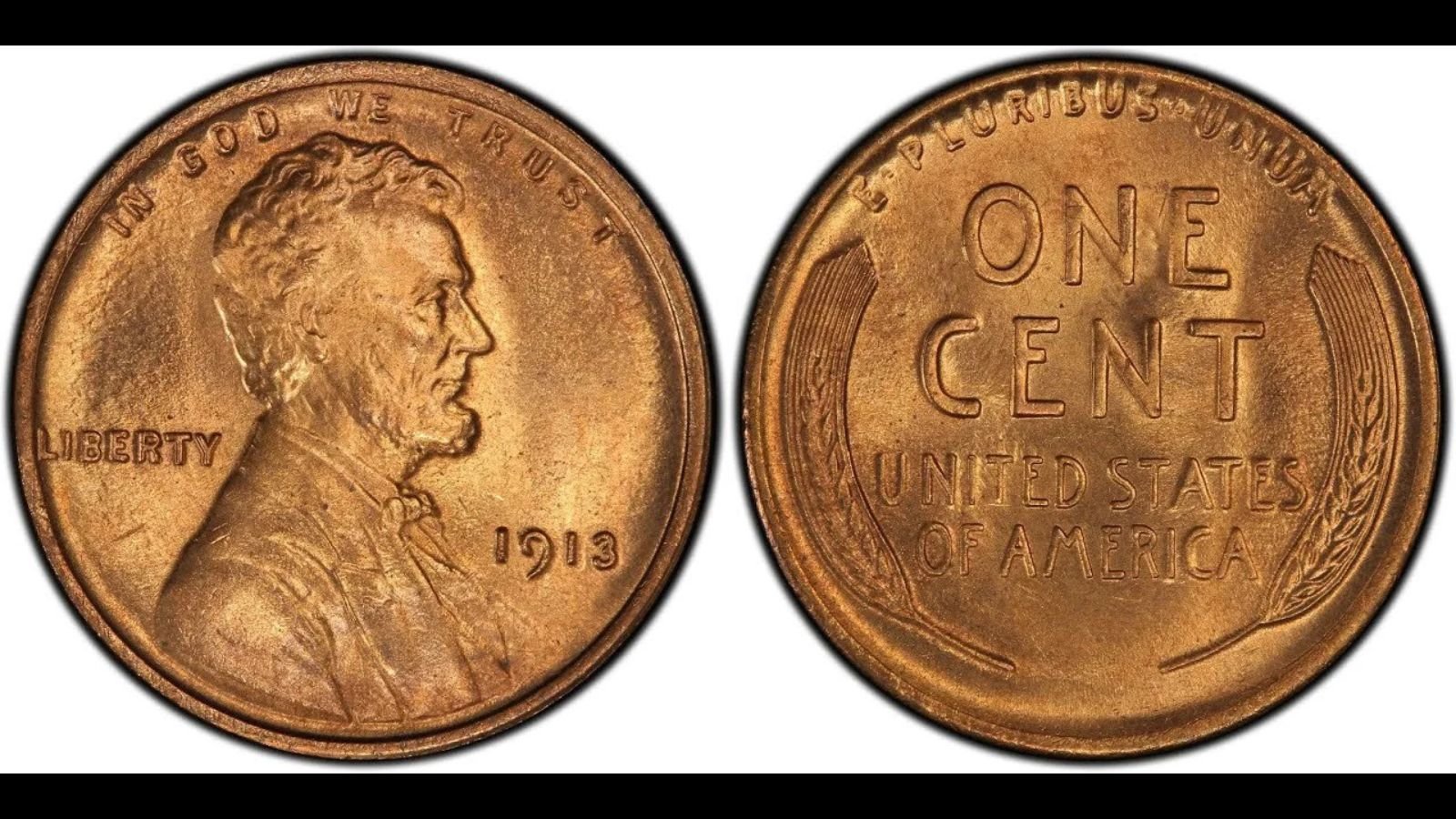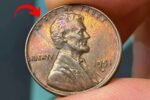In the fascinating world of coin collecting, the Lincoln Wheat Penny holds a legendary place. While many people see it as just another piece of old change, collectors and numismatists know better. Some rare versions of this coin have fetched astronomical prices—one even sold for an incredible $1.7 million. What’s even more exciting is that a few of these rare Lincoln Wheat Pennies may still be out there, in circulation, waiting for a lucky discovery.
The Rare Bicentennial Quarter Valued at $2.5 Billion, Still in Circulation
The Allure of the Lincoln Wheat Penny
The Lincoln Wheat Penny was introduced in 1909 to mark the centennial of Abraham Lincoln’s birth. It became the first U.S. coin to feature a real historical figure. Designed by Victor David Brenner, the obverse bears Lincoln’s dignified profile, while the reverse is adorned with two simple wheat stalks encasing the denomination and the country’s name.
This coin remained in circulation until 1958, after which it was replaced by the Lincoln Memorial design. Over the decades, more than 25 billion Wheat Pennies were minted, making them fairly common at one point. However, not all Lincoln Wheat Pennies are created equal. Some carry unique characteristics—rare mint marks, production errors, or limited mintages—that elevate them into the realm of highly valuable collectibles.
Why Are Some Lincoln Wheat Pennies So Valuable?
While most Lincoln Wheat Pennies are worth only a few cents above face value, others have commanded six or even seven-figure prices at auction. So, what makes one of these humble copper coins so valuable?
1. Rare Mint Marks and Dates
One of the most coveted Wheat Pennies is the 1909-S VDB, named for the initials of designer Victor David Brenner. Only 484,000 of these were minted at the San Francisco Mint before public backlash over the prominent initials led to their removal. Their scarcity makes them extremely desirable.
Other rare dates and mint marks include:
-
1914-D: With only about 1.2 million struck in Denver, this penny is one of the toughest to find in high grades.
-
1922 No D: Due to a striking error at the Denver Mint, some coins lack the “D” mintmark entirely, making them highly collectible.
2. Dramatic Mint Errors
The Lincoln Wheat Penny is also famous for several high-profile error coins. One of the most iconic is the 1955 Doubled Die, which features unmistakable doubling in the lettering on the obverse. These errors were the result of misaligned die impressions during the minting process.
Other sought-after errors include:
-
Off-center strikes
-
Coins struck on the wrong planchet
-
Die breaks and cracks
3. Low Mintage Years
Some years saw lower production numbers, making certain Lincoln Wheat Pennies rare by volume alone. Coins from these years—especially in good condition—can fetch hundreds or thousands of dollars.
4. Uncirculated and High-Grade Examples
Condition matters significantly in the world of coin collecting. Coins graded MS-67 or higher by professional grading services like PCGS or NGC are exceedingly rare and demand premium prices. Even a common year Wheat Penny can be worth several hundred dollars if it is in near-perfect condition.
The Famous $1.7 Million Lincoln Wheat Penny
Perhaps the most remarkable Lincoln Wheat Penny is the 1943 Bronze Wheat Penny. During World War II, copper was urgently needed for the war effort, so the U.S. Mint switched to zinc-coated steel for penny production. However, a few bronze blanks from 1942 were mistakenly struck in 1943, creating one of the most legendary errors in American numismatics.
Key facts about the 1943 Bronze Lincoln Wheat Penny:
-
Only 10–15 specimens are believed to exist.
-
One sold for $1.7 million in 2010.
-
Another fetched $1.35 million at auction in 2021.
-
Their value stems from extreme rarity, historical significance, and unique composition.
Could There Be a Lincoln Wheat Penny Treasure in Your Pocket?
It may sound like a fantasy, but rare Lincoln Wheat Pennies have been found in everyday change. While most valuable examples are held in private collections or coin auctions, some still surface in surprising ways:
1. Unaware Spendings
Many people don’t realize the value of old coins. A rare Lincoln Wheat Penny could easily be spent as a regular penny by someone who’s unaware of its worth.
2. Inherited Collections
Coins passed down through generations often end up in drawers or jars. When these collections are eventually used or discarded, rare Wheat Pennies can re-enter circulation.
3. Old Hoards Reemerging
During the early 20th century, some people hoarded pennies. If these hoards are rediscovered today, there’s a chance they could include valuable Lincoln Wheat Pennies.
How to Identify a Valuable Lincoln Wheat Penny
If you come across an old penny and want to know if it’s worth something, here are key steps to follow:
Step 1: Check the Date and Mint Mark
Focus on key dates: 1909-S VDB, 1914-D, 1922 No D, 1931-S, and 1955 Doubled Die. Look for mint marks below the date—”D” for Denver, “S” for San Francisco, and blank for Philadelphia.
Step 2: Look for Errors
Some of the most valuable Lincoln Wheat Pennies have visible mistakes. Check for:
-
Letter doubling
-
Off-center designs
-
Unusual metal colors
-
Missing or faint mint marks
Step 3: Assess Condition
A coin’s grade is crucial in determining its value. Coins with minimal wear, sharp features, and no damage are more desirable. Professional grading agencies use a 70-point scale, and coins graded MS-65 to MS-67 are highly sought after.
Step 4: Get a Professional Opinion
If you think you’ve found something special, send the coin to a reputable grading service such as PCGS (Professional Coin Grading Service) or NGC (Numismatic Guaranty Company) for authentication and grading. A certified coin is easier to sell and fetches a higher price.
What to Do With a Rare Lincoln Wheat Penny
If your Lincoln Wheat Penny turns out to be valuable, you have a few options:
1. Preserve It Properly
Store the coin in a protective case or holder to avoid scratches, fingerprints, or other damage.
2. Document and Insure
Keep a record of where and when you found the coin. If it’s extremely valuable, consider getting it insured.
3. Sell Through Reputable Channels
Auction houses like Heritage Auctions, Stack’s Bowers, or even online platforms such as eBay are options for selling, especially if the coin is authenticated and graded.
The Thrill of the Hunt
The idea that a coin worth over $1.5 million could be sitting in someone’s change jar or forgotten piggy bank is what makes coin collecting so compelling. The Lincoln Wheat Penny is more than just a relic of early 20th-century currency—it’s a symbol of hidden value and historical charm.
Whether you’re a seasoned numismatist or just starting out, the search for a rare Lincoln Wheat Penny brings with it excitement, nostalgia, and the possibility of a life-changing discovery.
Final Thoughts
The Lincoln Wheat Penny might look unassuming, but it carries a story that spans more than a century. From honoring a beloved president to being part of wartime history, these coins are cherished not only for their monetary value but also for their role in American heritage.
What makes the Lincoln Wheat Penny so special is that it combines rarity, history, and the thrill of the hunt. With coins like the 1943 Bronze Penny selling for millions, it’s clear that even something as small and familiar as a penny can hold incredible worth. Keep your eyes open—your next pocket full of change might just contain a tiny piece of American history.
FAQ: Lincoln Wheat Penny Worth Over $1.5 Million
Q1: Is it true that a Lincoln Wheat Penny sold for $1.7 million?
Yes, a 1943 Bronze Lincoln Wheat Penny sold for $1.7 million in a private sale. Only a handful of these error coins are known to exist, making them some of the rarest in U.S. history.
Q2: What makes the Lincoln Wheat Penny valuable?
Factors include rare mint marks (like the 1909-S VDB), low mintage years (like 1914-D), major mint errors (like the 1955 Doubled Die), and coins in pristine uncirculated condition.
Q3: How can I check if I have a valuable Lincoln Wheat Penny?
Check the date and mint mark, inspect for visible errors, assess the condition, and consider sending it to a grading service like PCGS or NGC for professional evaluation.
Q4: Are Lincoln Wheat Pennies still found in circulation?
Yes, although rare, valuable Lincoln Wheat Pennies can still be found in circulation, particularly in old coin jars, inherited collections, or through accidental spendings.
Q5: What should I do if I think I found a rare Wheat Penny?
Preserve it carefully, get it authenticated and graded, and then explore reputable sales options, including auctions or direct sales to collectors.
Some Important Link
| Telegram Group | Click Here |
| WhatsApp Group | Click Here |
| Home Page | Click Here |














